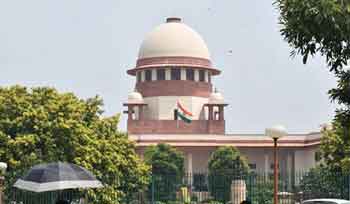INVC NEWS
Chennai : The arrival of Cyclone Michoung in Chennai, Tamil Nadu, has created an extraordinary crisis, unravelling the city’s fabric and putting its resilience to the test. This natural calamity has led to severe flooding, especially in areas such as Pallikaranai, and has caused extensive damage to critical infrastructure. The Jerusalem College of Engineering is among the many institutions grappling with significant waterlogging, disrupting the educational environment.
The situation escalated to such an extent that the Defense Minister of India, Rajnath Singh, made an urgent visit to assess the damage and coordinate relief efforts. His presence in Chennai underscores the severity of the situation and the government’s commitment to swift and effective action. Singh’s visit included a meeting with Tamil Nadu’s Chief Minister MK Stalin, highlighting a unified approach to disaster management.
Extensive Floods in Chennai: A Closer Look at the Affected Areas
Chennai’s Pallikaranai area, known for its rich biodiversity and the Pallikaranai Wetland, has been severely impacted. The flooding here is not just a natural disaster but also a significant environmental concern, given the area’s ecological significance. Similarly, the waterlogging at the Jerusalem College of Engineering is not just an academic interruption but a symbol of the broader impact on the city’s future generations.
Government Response and Relief Efforts
Defense Minister Rajnath Singh’s visit to Chennai is not just a ceremonial gesture but a pivotal moment in the crisis management efforts. His discussions with CM MK Stalin and other officials are crucial in shaping a coordinated response. The request by CM Stalin to Prime Minister Narendra Modi for an immediate aid of INR 5,060 crores is a testament to the gravity of the situation and the need for substantial financial support.
The Use of Technology in Disaster Management
The release of drone footage in the Madipakkam area, showcasing the receding water levels, represents a modern approach to disaster assessment and management. These aerial surveys provide invaluable insights into the extent of the damage and help in strategizing the recovery process. Defense Minister Rajnath Singh’s plan to conduct aerial surveys of the affected areas in Tamil Nadu is a step towards harnessing technology for effective disaster management.
Mitigation and Future Preparedness
The aftermath of Cyclone Michoung has left a trail of destruction in Chennai and other parts of Tamil Nadu. However, it has also brought to light the importance of disaster preparedness and mitigation strategies. The closure of schools and colleges, and the postponement of examinations, while disruptive, are necessary measures to ensure the safety of students and staff.
The weakening of Cyclone Michoung before hitting the coast between Nellore and Machilipatnam in Andhra Pradesh, and its prior devastating effects in Chennai, highlight the unpredictable nature of such natural calamities. It underscores the need for robust infrastructure, early warning systems, and a well-prepared disaster response mechanism.
Building a Resilient Future
As Chennai gradually recovers from the aftermath of Cyclone Michoung, the focus shifts to rebuilding and strengthening the city’s resilience against future calamities. The combined efforts of the state and central governments, along with the community’s spirit, will play a pivotal role in this journey towards recovery and resilience. The lessons learned from this experience will undoubtedly contribute to more robust disaster management strategies, ensuring that Chennai, and indeed all vulnerable areas, are better prepared to face such challenges in the future.













